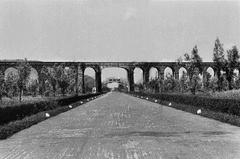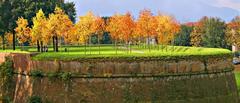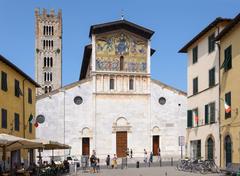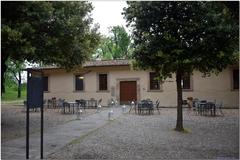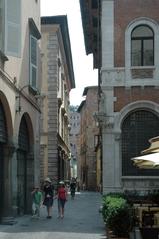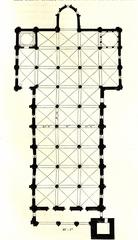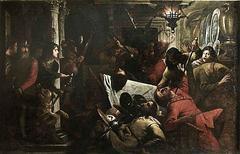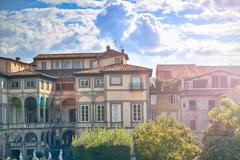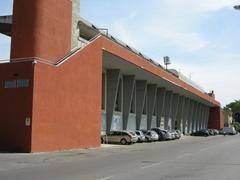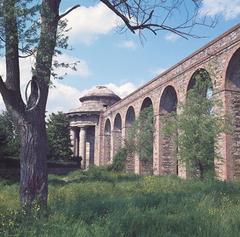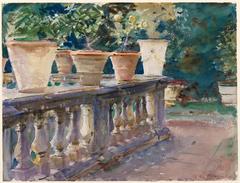Casermetta San Frediano: Visiting Hours, Tickets, and the Ultimate Guide to Lucca’s Historic City Walls
Date: 14/06/2025
Introduction
Casermetta San Frediano, embedded within the iconic Renaissance walls of Lucca, Italy, is a remarkable testament to the city’s military heritage and cultural vibrancy. Originally constructed as a strategic defensive post near the renowned Basilica of San Frediano, the casermetta has evolved into a dynamic venue for historical reenactments, community gatherings, and cultural exhibitions. This comprehensive guide delivers detailed insights on Casermetta San Frediano’s history, architecture, visiting hours, ticketing, accessibility, and nearby attractions—equipping travelers and history enthusiasts with everything needed for an enriching visit. For the most current information, consult the Lucca tourism website and official event links.
Contents
- Early Origins and Strategic Role
- Architectural Features and Military Function
- Civic and Cultural Transformation
- Modern Role: Living History and Community Engagement
- Context within Lucca’s City Walls
- Visiting Hours, Tickets, and Accessibility
- Events and Community Life
- Preservation Efforts
- FAQs
- Nearby Attractions and Itineraries
- Practical Travel Tips
- Conclusion
Early Origins and Strategic Role
Casermetta San Frediano is one of several fortified structures built into Lucca’s 4.2-kilometer Renaissance-era city walls, a circuit renowned for its preservation and engineering excellence. The walls were constructed in multiple phases, culminating in a massive 16th and 17th-century expansion designed to defend the city from regional threats (Brunelleschi IMSS). Located near the Basilica of San Frediano, the casermetta was crucial in safeguarding Lucca’s northwestern approach, providing shelter for soldiers and facilitating rapid artillery deployment during times of siege (Mapcarta).
Architectural Features and Military Function
The casermetta exemplifies Renaissance military architecture, featuring thick masonry walls, barrel-vaulted ceilings, and narrow defensive openings. The surrounding city walls rise approximately 12 meters and are 30 meters wide at the base, accommodating both troop movement and artillery emplacements (Brunelleschi IMSS). Although equipped with over 120 cannons, Lucca’s walls—including Casermetta San Frediano—were never subjected to direct assault, with the only significant military action occurring in 1799 when Austrian troops seized Lucca’s artillery (Brunelleschi IMSS).
Civic and Cultural Transformation
By the 19th century, the decline of city-states and advances in military technology rendered Lucca’s fortifications obsolete. Under Duchess Maria Luisa of Bourbon, architect Lorenzo Nottolini transformed the walls into a public promenade, planting trees and converting military spaces like Casermetta San Frediano for civic uses (Brunelleschi IMSS). Today, the casermetta hosts exhibitions, workshops, and serves as a headquarters for local historical and cultural associations, reflecting Lucca’s shift from fortress to cultural center.
Modern Role: Living History and Community Engagement
In recent years, Casermetta San Frediano has become a hub for local heritage groups. The city assigned the space to the Sbandieratori e Musici “Città di Lucca” (flag-wavers and musicians) and Associazione Historica Lucense, both of which organize historical reenactments, educational programs, and cultural events (La Nazione; Lucca in Diretta). These associations keep centuries-old traditions alive, ensuring the casermetta remains a vibrant part of Lucca’s cultural fabric.
Context within Lucca’s City Walls
Casermetta San Frediano is an integral part of Lucca’s city walls, considered among the best-preserved Renaissance fortifications in Europe and a UNESCO World Heritage candidate (Turismo Lucca). Its strategic location offers panoramic views of the Basilica di San Frediano, Palazzo Pfanner’s gardens, and Lucca’s historic skyline, making it a highlight for walkers and cyclists exploring the city’s green belt.
Visiting Casermetta San Frediano: Hours, Tickets, and Accessibility
Visiting Hours
- Casermetta San Frediano: Public access is typically available during daylight hours (9:00 AM–6:00 PM). Hours may be extended during special events or festivals. For the most current schedule, check the official Lucca tourism website.
- City Walls Promenade: Open year-round, accessible at any hour.
Tickets and Admission
- General Access: Free when accessed as part of the city walls.
- Special Events/Exhibitions: Some activities may require tickets (prices range from €5–€15). Tickets are available online or on-site.
Accessibility
- Promenade: Ramps and smooth paths are suitable for wheelchairs and strollers.
- Casermetta Interior: Accessibility varies by event; contact the Lucca tourism office for details.
Getting There
- Casermetta San Frediano is easily reached on foot or by bicycle from Lucca’s historic center.
- The nearest bus stop is San Frediano 1 (LAM Verde line); Lucca railway station is about 1.3 km away (Ostello San Frediano).
Events and Community Life
The casermetta hosts numerous cultural activities, especially during festivals like the annual Settembre Lucchese and Lucca Historiae Fest (Turismo Lucca). Highlights include:
- Flag-waving demonstrations by Sbandieratori e Musici
- Historical reenactments and parades
- Art and photo exhibitions
- Workshops and educational events
Event schedules are updated on the official tourism portal.
Preservation Efforts
Casermetta San Frediano exemplifies successful adaptive reuse, blending historical preservation with modern cultural functions. Ongoing restoration and community involvement ensure the site remains accessible and relevant (Secret Attractions).
Frequently Asked Questions (FAQ)
Q: What are Casermetta San Frediano’s visiting hours?
A: Generally open from 9:00 AM to 6:00 PM; hours may vary for events.
Q: Is there an admission fee?
A: Access is usually free; special events may require tickets.
Q: How do I reach Casermetta San Frediano?
A: On foot or by bike along the city walls, near Basilica di San Frediano. Bus and train access is nearby.
Q: Is the site accessible to visitors with disabilities?
A: The promenade is accessible; interior access depends on the event. Contact the tourism office for assistance.
Q: Are guided tours available?
A: Yes, especially during festivals or by arrangement through local tour operators.
Nearby Attractions and Suggested Itineraries
- Basilica di San Frediano: Celebrated for its Romanesque architecture and striking golden mosaic façade (Cestee).
- Palazzo Pfanner: Renowned gardens and elegant interiors.
- Piazza San Frediano: A lively square with cafés and local shops (Travel Taste Feel).
- Via Fillungo: Main shopping street, perfect for strolling.
- Piazza dell’Anfiteatro: Oval-shaped piazza built on Roman ruins (The Tourist Checklist).
- Torre Guinigi: Climb for panoramic city views (TukTuk Travel Mag).
A recommended itinerary: Begin with a walk along the city walls, visit Casermetta San Frediano and the basilica, enjoy lunch in Piazza San Frediano, and explore Lucca’s towers and museums in the afternoon.
Practical Travel Tips
- Best Times to Visit: Spring (April–June) and autumn (September–October) offer mild weather and fewer crowds (North Abroad).
- Amenities: Public restrooms and shaded seating are found along the walls. Bicycle rentals are available nearby.
- Accessibility: While the promenade is accessible, interior access to the casermetta varies; check in advance.
- Dining: Sample local cuisine at nearby trattorias like Da Giulio and L’Angolo Tondo (Savoring Italy).
- Accommodation: Options range from hostels like Ostello San Frediano to boutique hotels in the city center (Ostello San Frediano).
- Language: Italian is spoken widely; English is understood in most tourist areas.
Conclusion
Casermetta San Frediano embodies the fusion of Lucca’s military ingenuity and its contemporary cultural vitality. As a linchpin of the city’s Renaissance walls, it offers visitors an immersive experience—whether through panoramic walks, engaging community events, or explorations of nearby architectural gems. For the latest on visiting hours, tickets, and events, consult the Lucca tourism portal and consider enhancing your visit with the Audiala app, which offers interactive maps and guided audio tours. Discover the living history and enduring spirit of Lucca at Casermetta San Frediano—where the past is not only preserved, but celebrated.
Sources
- The Walls of Lucca, 2024, Brunelleschi IMSS
- Casermetta San Frediano official events, 2022, La Nazione
- Casermetta San Frediano new headquarters, 2022, Lucca in Diretta
- Walk Lucca City Walls, 2024, Turismo Lucca
- Basilica of San Frediano, 2024, Cestee
- Basilica of San Frediano, 2024, The Crazy Tourist
- Self-Guided Walking Tour of Lucca, 2024, Nomads Travel Guide
- Casermetta San Frediano cultural spots, 2024, Secret Attractions
- Lucca City Walls and Casermetta Guide, 2024, Italyscapes
- Lucca Travel Guide, 2024, North Abroad
- Lucca Settembre Lucchese Festival, 2024, Turismo Lucca
- Travel Taste Feel, Lucca Guide
- Ostello San Frediano
- Savoring Italy
- TukTuk Travel Mag
- The Tourist Checklist
